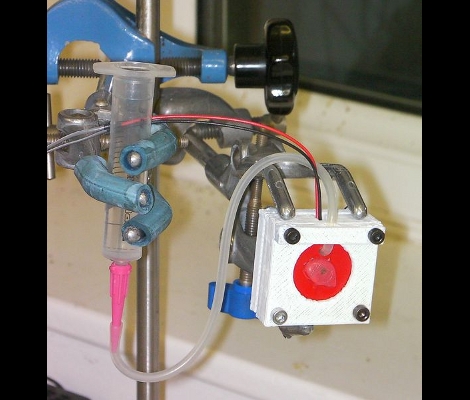
This is an inkjet print head made using a RepRap. The manufacturing process is both simple and ingenious. It uses a vibrating piezo buzzer to pump printing liquid through a tiny nozzle. The red disc seen above is exactly the same diameter as the piezo that resides behind it. There is a hole offset from the center to feed ink in between the two discs. Take a look at the test footage after the break.
To make the nozzle a hole was cut in the plastic disc, then a pin inserted and the whole thing was covered with hot glue. The next step was to remove the pin and shave down the glue until the narrow aperture is open. [Adrian Bowyer] is still in the testing phase for this assembly, but once he gets the bugs worked out he plans to test it with a heating element so that it can print using wax and other materials that are liquid when hot.
[Vik] tipped us off about this one after seeing the printable transistors from the other day.



















